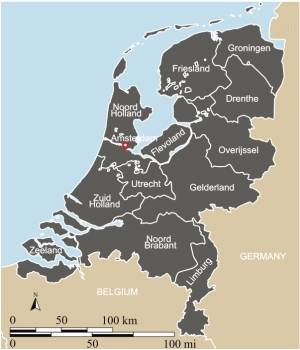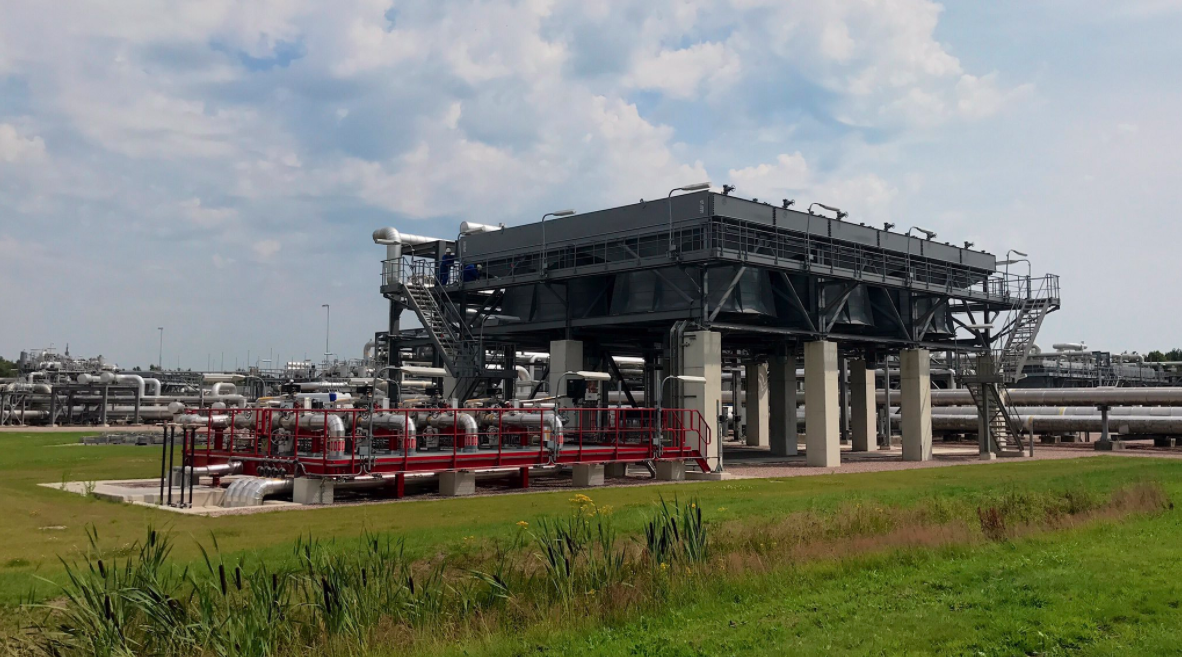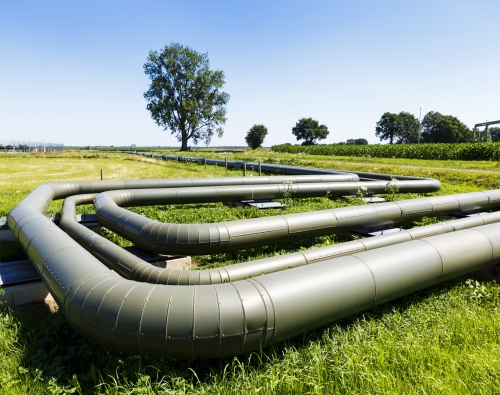[NGW Magazine] Twilight for the Dutch giant
The size of the latest Dutch earthquake has increased political pressure to cut gas production from the giant Groningen gas field, with consequences for the profits of the producers and the Dutch balance of payments.
A recent earthquake in the province of Groningen has put the reduction of Dutch gas production at the top of the political agenda in the Netherlands. The size of the proposed cut could upset natural gas supply in the neighbouring countries of Germany, France and Belgium, where it is seen only as a technical problem that can easily be solved.
The latest earthquake, on January 8 near Zeerijp, registered 3.4 on the Richter scale. This is less than the Huizinge earthquake in 2012, but its peak ground acceleration, a measure indicating the potential for damage at the surface, was higher. A few days later, about 10,000 people participated in a torch-light demonstration against natural gas production, the largest such protest ever staged in the Netherlands.
Immediately after the earthquake, there was a nationwide consensus about reducing Dutch gas production. But only a few days later, gas producer NAM (a joint venture between Anglo-Dutch Shell and US ExxonMobil) with state-owned EBN as a partner expressed some doubts about the calculation of the reduction level proposed by SSM, the Dutch supervisor of gas production and mining. In the Dutch parliament, several political factions voiced their disapproval of NAM's statement.
The number of damage claims related to Dutch gas production is climbing. Since 2012, NAM has paid about €500mn for such claims, or about a fifth of its 2016 profits. Earlier, the Dutch government said it would cut annual gas production from 21.6bn m³ in 2017 to 20.1bn m³ over the next four years.
Even with existing output cuts, NAM still maintains a large profit margin. But after the recent earthquakes, economy and climate minister Eric Wiebes opened the door to even larger reductions, although he did not mention a volume. He intends to make a final decision on the depth of gas cuts by the end of March, after receiving advice from SSM. The supervisor's remit does not extend to considerations of security of energy supply: that will be left to Wiebes and the Dutch government.
Damage compensations grow
If output falls to 12bn m³ – the volume proposed by left-wing ecologist party Groen Links and also by the Dutch mining supervisory body SSM February 1 – the profit picture changes drastically. Furthermore, two court verdicts – one in 2015 and the other this year – ordered that NAM not only has to pay for direct damages caused by the earthquakes, but also for the discounted value of undamaged homes in the Groningen area. These kinds of claims could cost the gas company an additional €14bn, some say.

Gas storage facility in Norg, Groningen (Credit: NAM)
Wiebes also confirmed his opinion that NAM cannot be left to make decisions on which damages are caused by gas extraction and which are not, but rather that an independent organisation should be the judge. To bring this opinion into practice however, negotiations with NAM and probably even its parent, Shell, will be necessary. Only recently, the daily paper Trouw (Loyalty) discovered that Shell in 2017 made a move to cancel its financial responsibility for NAM.
But Royal Dutch Shell CEO Ben van Beurden vigorously rejected those reports during a conference call February 1 releasing Shell's 4Q2017 results. “Both shareholders want to retain their stakes in NAM,” van Beurden said. "NAM is very strong...I want to remove any thought that Shell would shirk its responsibility [to earthquake damage claimants]...NAM has a legal responsibility to contribute.”
L-gas and H-gas
The Netherlands has several gas production areas, but the Groningen field, in the far northeastern corner of the country, is by far the largest. Unlike gas from most other supplying countries, most Dutch gas has a low heat content (L-gas). The transport and distribution grids and the oldest household appliances in most of the Netherlands, in central Belgium, in the French provinces of Nord and Pas de Calais and in parts of the German Lander Lower Saxony and Nord Rhine-Westphalia areas are based on this type of natural gas. Germany also has some of its own L-gas production in its northwest and Belgium and France only receive that kind of gas from the Netherlands.
.png)
Natural gas drilling tower (Credit: NAM)
While L-gas accounts for about a tenth of French gas demand and 30% of Germany's and Belgium's, its share in the Netherlands approaches 60%. The reduction of the domestic L-gas production can be offset by lowering demand or by switching to higher heating value gas (H-gas), most of which would have to be imported, or to other energy sources.
New buildings in the Netherlands will need less gas for heating or will be heated by other energy sources. During house renovations, gas-fired heating systems can be replaced by other systems, such as hybrid heat pumps. This evolution is proceeding very slowly. But Wiebes is going to send about 200 companies with a combined L-gas consumption of about 5.5bn m³ a letter urging them to consider an alternative – perhaps a switch to H-gas or electricity – by 2022.
Large industrial gas consumers show reluctance
"For most companies this switch to H-gas is far more difficult than the government thinks," said Hans Grunfeld, president of VEMW, the organisation defending the interests of the largest Dutch energy consumers. "It is not only a question of administration: physical operations also are needed."
The switch option was proposed by research institute TNO, because it should be possible to do this switch in a very short time. Other solutions, such as minimising export obligations, building plant to convert H-gas into L-gas such as by injecting nitrogen, which is what makes Groningen gas different, and cutting domestic gas consumption, would take longer.
But Grunfeld says that for several companies it is difficult to interrupt their production processes, unless for long-term planned maintenance outages. He suggests spending more money in installations to add nitrogen to H-gas. This may relieve the Dutch industry of a portion of the costs, as the combined consumption of VEMW members is much lower than the exported volume of L-gas. Nitrogen installations can be used not only to convert imported natural gas, but to also convert domestic biogas into L-gas. Grunfeld argues that it should be out of the question for VEMW member companies to have to pay the costs of the switch, because they never had a choice between L-gas and H-gas. He also warned that it would not be politically-expedient to convert industrial installations now, while the political climate perspective involves lower CO2.
TNO also proposed a partial solution. Researcher Rene Peters mentioned that the export contracts do not mention the volume of gas to be exported, but only the volumes to be available for export. The contracts take into account that winters can be mild or severe. If the Netherlands were to increase its storage capacity for L-gas, it can realise a buffer stock for a severe winter and bring peak production from Groningen to a lower level. Another option is the newly-discovered gas field near the island of Schiermonnikoog, in the North Sea. This field contains about 6bn m³ of natural gas.
Neighbours have alternatives
The neighbouring countries have already agreed to diminish their demand of Dutch natural gas. For Belgium and France this will happen between 2024 and 2030, for Germany between 2020 and 2030. In 2030, the Netherlands will stop being an exporter of natural gas.
In Germany and France, only relatively small areas are dependent on Dutch gas, but in Belgium the share of Dutch L-gas reaches 27% of national gas consumption. Belgium, however, has several other possibilities to meet demand: pipelines through Germany for Norwegian gas; the LNG-terminal in Zeebrugge; the Interconnector with the UK under the North Sea; and a pipeline from the French LNG terminal in Dunkirk.

Pipeline network (Credit: NAM)
From the point of view of the Dutch state it is more profitable to lower exports than to reduce domestic demand. Today, because of the structures of the existing export contracts and Dutch taxes, Dutch gas is cheaper for Belgium consumers than for Dutch natural gas users.
Belgium, however, needs to adapt its transport and distribution infrastructure. The main question here is who will pay what part of the costs on the transport system. Brussels needs a complete conversion, Flanders a partial conversion and Wallonia – with a much smaller, but also less dense distribution grid– a very limited conversion. When the costs are paid on a federal level, Wallonia will pay a relatively high share, so this region is reluctant to make the move. The other regions make the point that 50 years ago, when coal gas was replaced by Dutch natural gas, Wallonia benefited in a large way from the federal structure of the costs.
Koen Mortelmans
Nitrogen in gas fields
A group of engineers and other technicians, united in the work group Overleggroep Groningen 2.0, propose to inject nitrogen in the Groningen reservoir. The pressure of this gas can replace the pressure of the exploited natural gas and prevent new earthquakes, they say. If the injections should start in 2023, the reservoir can be stabilised by 2028.
NAM has been injecting nitrogen into smaller Dutch gas fields since 2012, a common practice to restore pressure in gas reservoirs. But little additional research on this has been conducted, since adopting the practice on a large field like Groningen could be prohibitively expensive.



